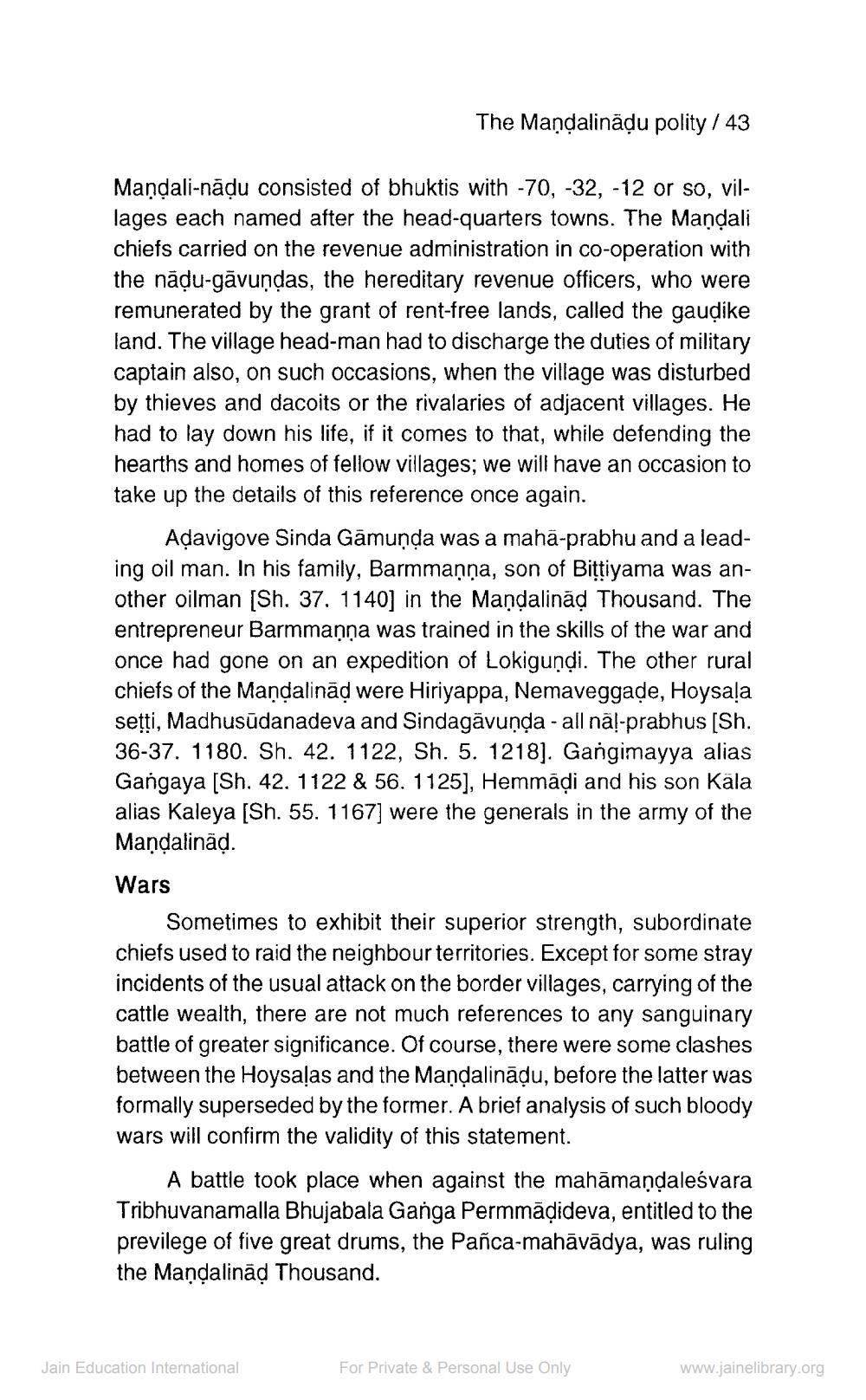________________
The Mandalinaḍu polity / 43
vil
Mandali-nādu consisted of bhuktis with -70, -32, -12 or so, lages each named after the head-quarters towns. The Mandali chiefs carried on the revenue administration in co-operation with the nāḍu-gāvuṇḍas, the hereditary revenue officers, who were remunerated by the grant of rent-free lands, called the gauḍike land. The village head-man had to discharge the duties of military captain also, on such occasions, when the village was disturbed by thieves and dacoits or the rivalaries of adjacent villages. He had to lay down his life, if it comes to that, while defending the hearths and homes of fellow villages; we will have an occasion to take up the details of this reference once again.
Aḍavigove Sinda Gāmuṇḍa was a mahā-prabhu and a leading oil man. In his family, Barmmanṇa, son of Bittiyama was another oilman [Sh. 37. 1140] in the Mandalinaḍ Thousand. The entrepreneur Barmmanna was trained in the skills of the war and once had gone on an expedition of Lokigundi. The other rural chiefs of the Mandalinaḍ were Hiriyappa, Nemaveggade, Hoysala setti, Madhusudanadeva and Sindagāvuṇḍa - all nal-prabhus [Sh. 36-37. 1180. Sh. 42. 1122, Sh. 5. 1218]. Gangimayya alias Gangaya [Sh. 42. 1122 & 56. 1125], Hemmāḍi and his son Kala alias Kaleya [Sh. 55. 1167] were the generals in the army of the Mandalinäḍ.
Wars
Sometimes to exhibit their superior strength, subordinate chiefs used to raid the neighbour territories. Except for some stray incidents of the usual attack on the border villages, carrying of the cattle wealth, there are not much references to any sanguinary battle of greater significance. Of course, there were some clashes between the Hoysalas and the Maṇḍalināḍu, before the latter was formally superseded by the former. A brief analysis of such bloody wars will confirm the validity of this statement.
A battle took place when against the mahāmaṇḍaleśvara Tribhuvanamalla Bhujabala Ganga Permmāḍideva, entitled to the previlege of five great drums, the Pañca-mahāvādya, was ruling the Mandalinaḍ Thousand.
Jain Education International
For Private & Personal Use Only
www.jainelibrary.org




